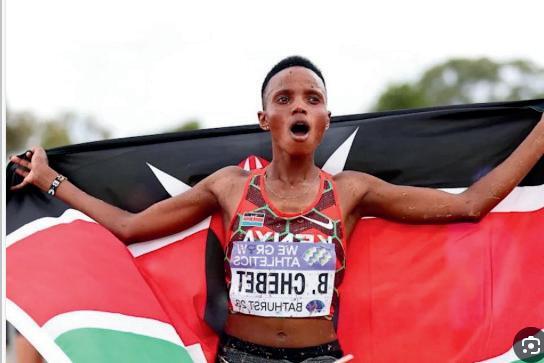
3 minute read
THE LAND THAT BREATHES CHAMPIONS
At dawn, the mist clings to the slopes of Kenya’s Rift Valley like a shroud. Here, in the highlands of Iten and the plateaus of Bekoji, Ethiopia, children run to school *10 kilometers uphill, barefoot*. They chase goats, fetch water, and race the sunrise, their lungs burning with air thin enough to starve the uninitiated. By adulthood, their bodies are forged not in gyms, but by the land itself. This is the cradle of distance running, where the earth breeds champions as naturally as it grows acacia trees. Kenya and Ethiopia dominate over 60% of global marathon wins and hold 80% of the men’s and women’s world records** from 5,000 meters to the marathon. But their supremacy is no accident. It is a saga of altitude, ancestry, and defiance.
THE GHOSTS OF CHAMPIONS PAST
*The story begins in 1960, when Abebe Bikila, an Ethiopian guard to Emperor Haile Selassie, stunned the world by winning the Rome Olympics *barefoot*. His victory, a defiant rebuke to Italy’s colonial occupation of Ethiopia, ignited a fire. Eight years later, Kenya’s Kipchoge Keino outran American Jim Ryun in Mexico City’s thin air, despite a gallstone attack. His gold medal became a metaphor: Africa would no longer lag behind. By the 1980s, the Kalenjin people of Kenya’s Rift Valley a tribe representing just 0.06% of the global population began a reign so total that scholars coined the Kalenjin Enigma. They now hold 40% of all major distance-running titles. Ethiopia answered with legends like Haile Gebrselassie and Kenenisa Bekele , whose 27 world records redefined human endurance. -
The Science of the Soil
Altitude: At 2,000–2,500 meters above sea level, the Rift Valley’s thin air forces the body to produce more red blood cells, boosting oxygen efficiency. Studies show runners training here gain a 3–5% performance edge enough to crush competitors. Genetics: Research on Kalenjin athletes reveals a unique ACTN3 gene variant, linked to endurance, and slender calf muscles that reduce energy expenditure. The Oromo people of Ethiopia share similar biomechanical advantages: long limbs, light frames, and a stride efficiency likened to “cheetahs in sneakers.” Culture: In Bekoji, Ethiopia, children idolize runners, not pop stars. The town of 17,000 has produced * 2 Olympic medalists “Here, running is not a sport. It’s a passport,” says Coach Sentayehu Eshetu, mentor to Olympic gold medalist Tirunesh Dibaba.
The Exploitation Machine
Behind the glory lies a stark paradox: Africa’s runners fuel a $30 billion global sports industry but rarely reap its rewards. Nike, Adidas, and NN Running Team sign Kenyan and Ethiopian athletes to contracts worth millions but invest little in local infrastructure. Only 5% of sponsorship money reaches grassroots programs. Agent Predation: Unscrupulous managers take up to 40% of athletes’ earnings, leaving stars like 2013 London Marathon winner Priscah Jeptoo bankrupt. Race Exodus: Europe and the Gulf poach talent with cash incentives. Qatar’s “Project Breakthrough” lured 50 Kenyan runners by 2024, stripping national teams of stars. “We are mined like cobalt,” says former marathon world record-holder Wilson Kipsang. “They take our speed but leave our villages in
**The New Challengers
The duopoly faces threats. Uganda’s Joshua Cheptegei reigning 5,000m and 10,000m world record-holder, trains in Kapchorwa—a region mimicking the Rift’s altitude. Tanzania’s Alphonce Simbu, 2024 Tokyo Marathon silver medalist, hails from the foothills of Mount Kilimanjaro. Even South Sudan, ravaged by war, has produced Olympians like Abraham Guem, who fled conflict to chase records. “Kenya and Ethiopia woke the world to African running,” says Cheptegei. “Now we all want a piece of the track.

